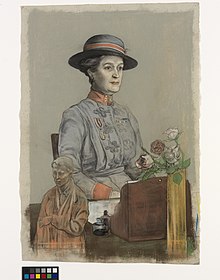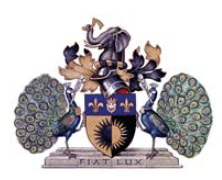
Moorfields Eye Hospital is a specialist National Health Service (NHS) eye hospital in Finsbury in the London Borough of Islington in London, England run by Moorfields Eye Hospital NHS Foundation Trust. Together with the UCL Institute of Ophthalmology, which is adjacent to the hospital, it is the oldest and largest centre for ophthalmic treatment, teaching and research in Europe.

Princess Mary's Royal Air Force Nursing Service (PMRAFNS) is the nursing branch of the British Royal Air Force.
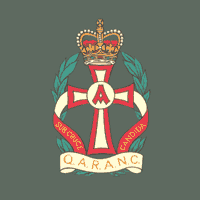
Queen Alexandra's Royal Army Nursing Corps was the nursing branch of the British Army Medical Services.

City Hospital was a major hospital located in Birmingham, England, operated by the Sandwell and West Birmingham Hospitals NHS Trust. It provided an extensive range of general and specialist hospital services. It is located in the Winson Green area of the west of the city.

Queen Alexandra's Royal Naval Nursing Service (QARNNS) is the nursing branch of the British Royal Navy. The Service unit works alongside the Royal Navy Medical Branch.
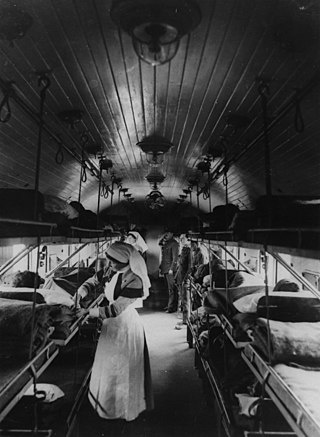
The Territorial Force Nursing Service (TFNS) was established in 1908, part of the reform of the British auxiliary forces introduced by Richard Haldane which created the Territorial Force. Nurses with at least three years of training were able to volunteer for the service, and facilities comprised 23 large buildings earmarked for use as hospitals in the event of war. The TFNS was augmented by the affiliation of Voluntary Aid Detachments. On the outbreak of the First World War, the hospitals were commissioned and up to 2,784 nurses mobilised to staff them. By the end of the war, up to 8,140 nurses had served with the TFNS, 2,280 of them in hospitals and casualty clearing stations abroad. After the war, the TFNS became the Territorial Army Nursing Service in line with the reconstitution of the Territorial Force as the Territorial Army.
Dame Sarah Elizabeth Oram, was a senior member of the Army Nursing Service and the Queen Alexandra's Imperial Military Nursing Service (QAIMNS). She served as Principal Matron, Nursing Inspector in the QAIMNS, and was attached to the British Expeditionary Force in France from 1914 to 1915 and subsequently as Acting Matron-in-Chief, QAIMNS, in the Eastern Mediterranean Expeditionary Force from 1915 to 1919 during the First World War.
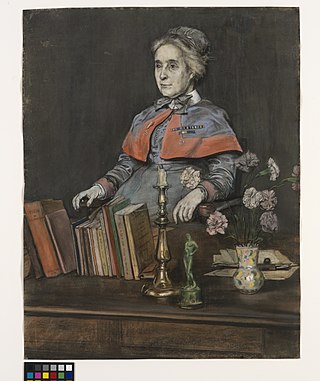
Dame Sidney Jane Browne, was the first appointed Matron-in-Chief of the newly formed Queen Alexandra's Imperial Military Nursing Service (QAIMNS). After she retired from the QAIMNS she was appointed as Matron-in-Chief of the Territorial Force Nursing Service. Browne was appointed a Dame Grand Cross of the Order of the British Empire in 1919 and, in 1922, she became the first President of the Royal College of Nursing, a post she held until 1925.

Eva Charlotte Ellis Luckes was matron of the London Hospital from 1880 to 1919.

Dame Mary Rosalind Paget, DBE, ARRC, was a noted British nurse, midwife and reformer. She was the first superintendent, later inspector general, of the Queen's Jubilee Institute for District Nursing, which was renamed as the Queen's Institute of District Nursing in 1928 and as the Queen's Nursing Institute in 1973.
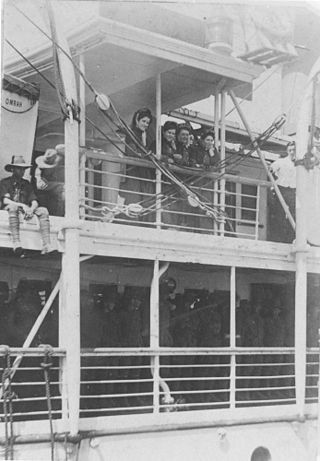
Australian women in World War I, were involved in militaries, and auxiliary organisations of the Allied forces abroad, and in administration, fundraising, campaigning, and other war time efforts on home front in Australia. They also played a role in the anti-war movement, protesting conscription, as well as food shortages driven by war activities. The role of women in Australian society was already shifting when the war broke out, yet their participation on all fronts during the Great War escalated these changes significantly.
Dame Katharine Henrietta Jones & Bar was Matron-in-Chief of Queen Alexandra's Imperial Military Nursing Service (QAIMNS) for most of the Second World War, serving from 23 July 1940 to 1944.

Isla Stewart was an English hospital matron of St Bartholomew's Hospital in London and a founding member of the Royal British Nurses' Association.

Liverpool Women's Hospital is a major obstetrics, gynaecology and neonatology research hospital in Liverpool, England. It is one of several specialist hospitals located within the Liverpool City Region, alongside Alder Hey Children's Hospital, Liverpool Heart and Chest Hospital, the Walton Centre, Mersey Regional Burns and Plastic Surgery Unit and Clatterbridge Cancer Centre. It is managed by the Liverpool Women's NHS Foundation Trust. The hospital receives approximately 50,000 patients annually and is the largest hospital for its specialism in Europe.
The history of nursing in the United Kingdom relates to the development of the profession since the 1850s. The history of nursing itself dates back to ancient history, when the sick were cared for in temples and places of worship. In the early Christian era, nursing in the United Kingdom was undertaken by certain women in the Christian Church, their services being extended to patients in their homes. These women had no real training by today's standards, but experience taught them valuable skills, especially in the use of herbs and folk drugs, and some gained fame as the physicians of their era. Remnants of the religious nature of nurses remains in Britain today, especially with the retention of the job title "Sister" for a senior female nurse.

Susan Bell McGahey was the matron of the Royal Prince Alfred Hospital from 1891 to 1904. McGahey was also co-founder of the Australasian Trained Nurses' Association in 1899 and president of the International Council of Nurses from 1904 to 1909.
Kate Evelyn Luard,, was a British nurse in the Second Boer War and First World War who was awarded the Royal Red Cross and Bar. She was the author of two books describing her experiences.

Dame Ethel Hope Becher, was a British nurse who served in the War Office as matron-in-chief of the Queen Alexandra's Royal Army Nursing Corps from 1910 to 1919.
Gertrude Mary Richards, was a British nurse and military nursing leader during the First World War. She was matron and principal matron in the Queen Alexandra's Imperial Military Nursing Service from 1904 until her retirement in 1919.
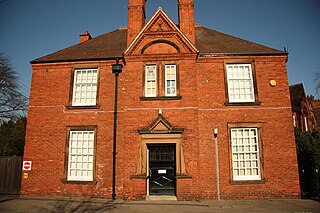
The Bromhead Institution for Nurses and the Bromhead Nursing Home, was a healthcare facility in Lincoln.
